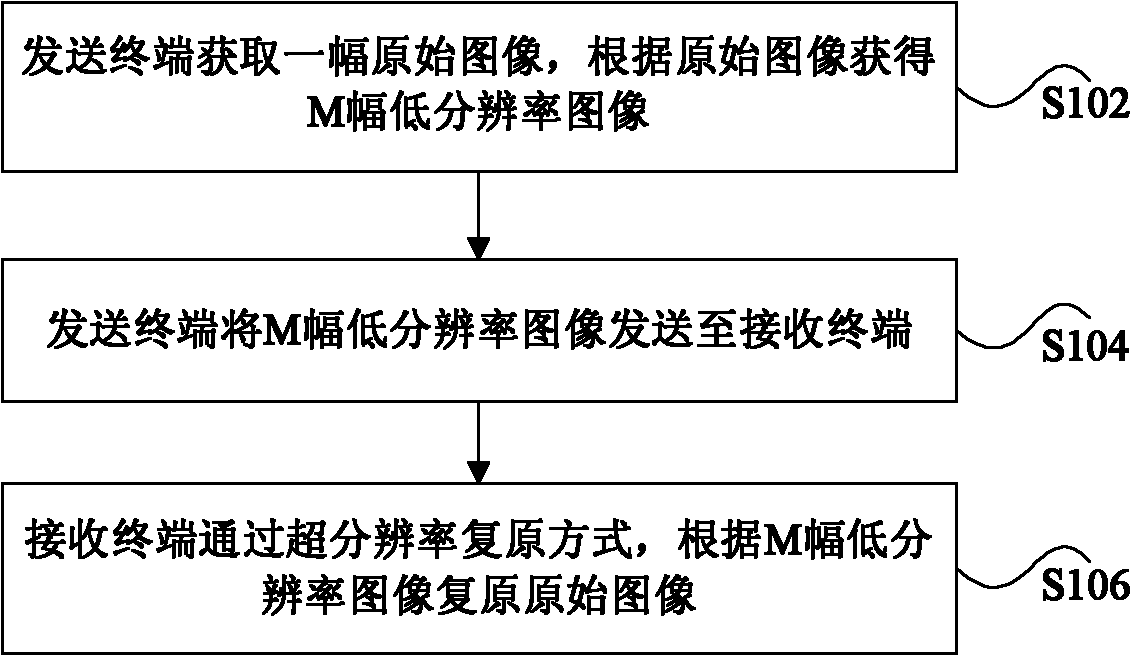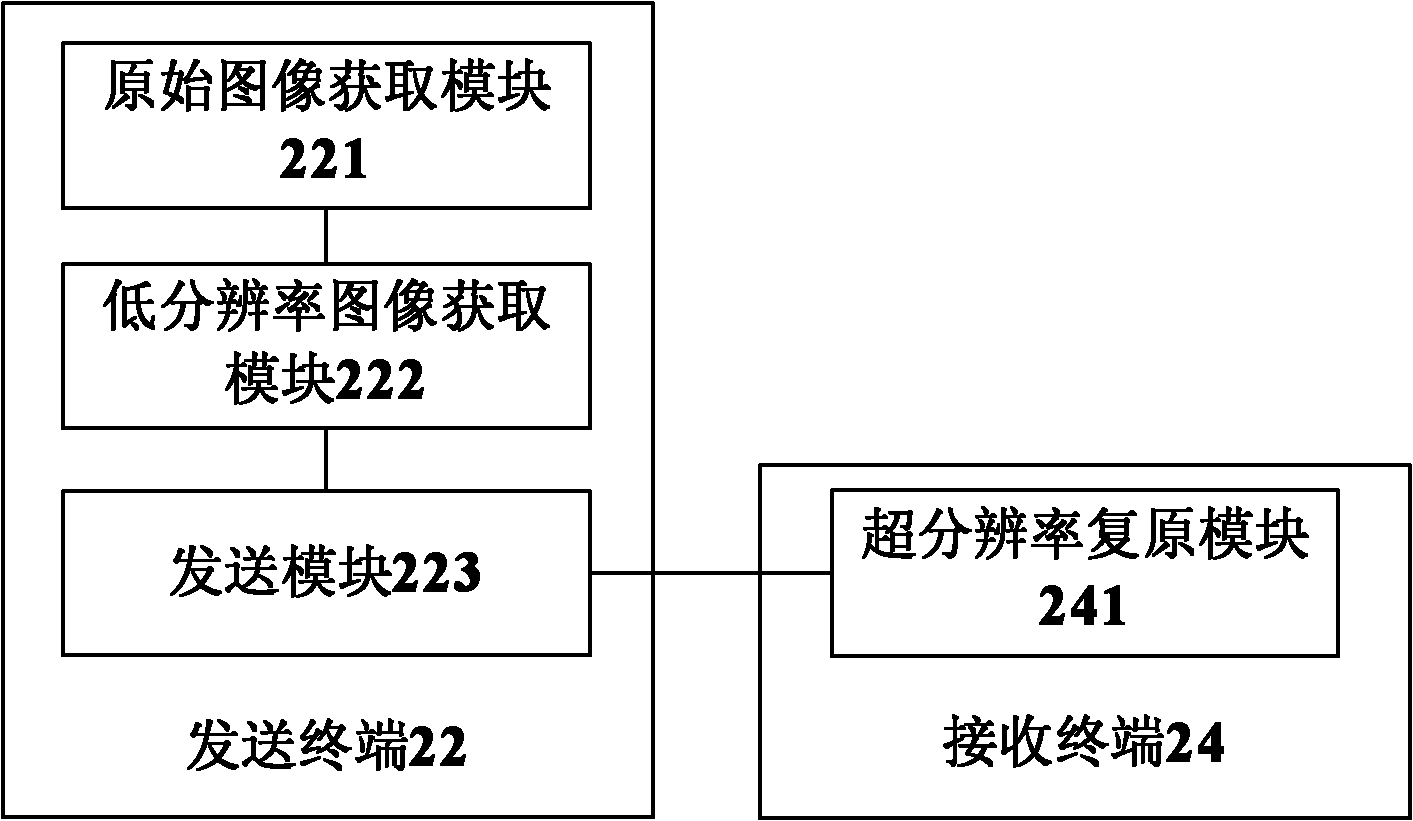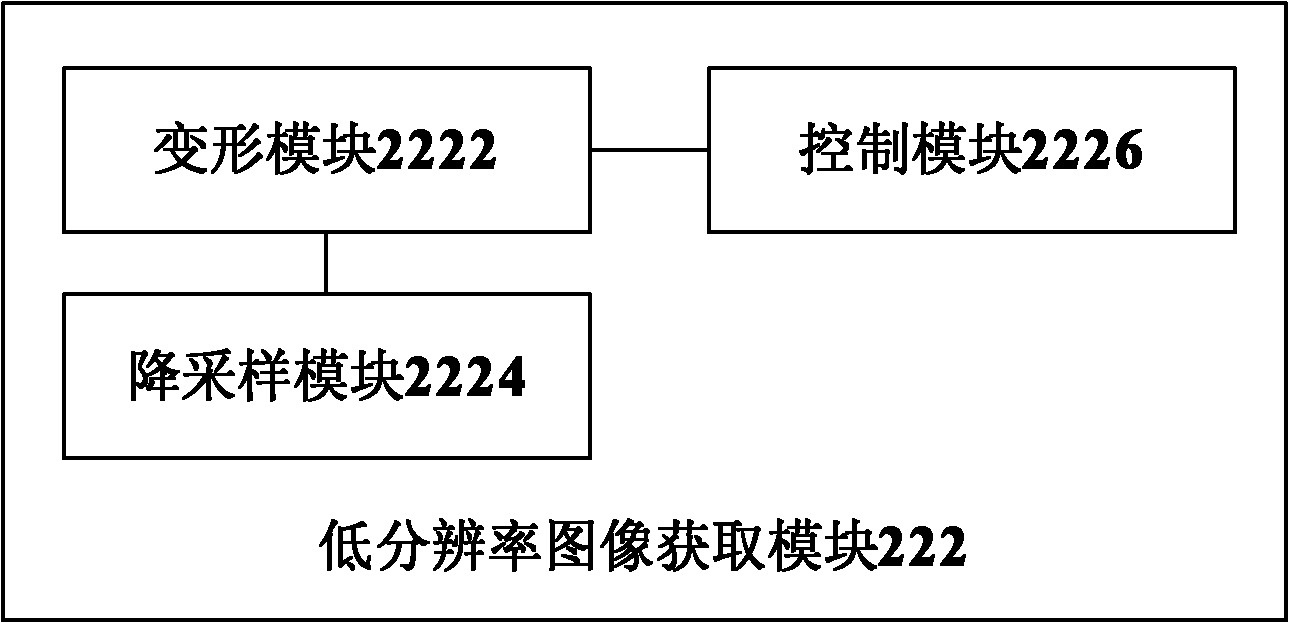Image transmission method and system
A transmission method and technology of a transmission system, applied in the field of image transmission methods and systems, can solve the problems that images occupy high network resources, the processing method is single, and it is difficult to meet various needs of users, so as to reduce the transmission size, reduce Overhead, the effect of good network resources
- Summary
- Abstract
- Description
- Claims
- Application Information
AI Technical Summary
Problems solved by technology
Method used
Image
Examples
Embodiment 1
[0048] The image transmission process described in this embodiment involves the following parts:
[0049] (1) As the mobile phone camera device or camera monitoring equipment as the sending terminal, its function is mainly to provide the initial image resource for the E module to provide image processing objects;
[0050] (2) The mobile phone as the receiving end is used to accept the image transmitted by the network, and then perform the decompression operation described in (3) to the image;
[0051] (3) The image compression and decompression technology used in the existing image transmission of mobile phones or networks mainly completes the compression of images at the sending end and decompression of images at the receiving end;
[0052] (4) The image transmission medium network, connecting the sending end and the receiving end, as an intermediary for image transmission;
[0053] (5) The implementation module of image downsampling and deformation (moving and rotating), ma...
Embodiment 2
[0058] This embodiment is based on the system configuration described in Embodiment 1, and describes the detailed processing process of the image transmission method, including the following steps:
[0059] In the first step, at first in the (1) module, that is, as the mobile phone camera device or camera monitoring equipment as the sending terminal, an initial image resource (such as a picture) is obtained;
[0060] In the second step, the (5) module deforms (moves and rotates) and down-samples the image to obtain a sequence of low-resolution images. Because of the influence of the camera and the environment or the optical factors of the sensor, the sequence of low-resolution images There will be a blur effect. Of course, this also depends on the current processing of the image acquired by the camera equipment itself, and the existence of noise. These factors must also be considered in the image restoration algorithm;
[0061] The third step is to obtain the sequence image th...
Embodiment 3
[0064] This embodiment takes a specific super-resolution restoration method as an example, and describes the detailed processing process of the image transmission method, including the following steps:
[0065] Step 1. Obtain an image from the mobile terminal as the sender, and then follow the Figure 7 The method of rotating and downsampling the image, Figure 7 What is shown is actually to establish an observation model from high-resolution to low-resolution images. Considering that it is an operation on the existing images, the receiving end restores the images. If the angle of each rotation is set in the coordinate system is θ, the displacement is x′, y′ in the coordinates x and y directions respectively (the rotation angle and displacement can be randomly set and obtained each time), sampling every other pixel, that is, the downsampling coefficient is 2, then after The resolution of the image obtained after this process is 1 / 4 of the original image; if you want to restor...
PUM
 Login to View More
Login to View More Abstract
Description
Claims
Application Information
 Login to View More
Login to View More - R&D Engineer
- R&D Manager
- IP Professional
- Industry Leading Data Capabilities
- Powerful AI technology
- Patent DNA Extraction
Browse by: Latest US Patents, China's latest patents, Technical Efficacy Thesaurus, Application Domain, Technology Topic, Popular Technical Reports.
© 2024 PatSnap. All rights reserved.Legal|Privacy policy|Modern Slavery Act Transparency Statement|Sitemap|About US| Contact US: help@patsnap.com










